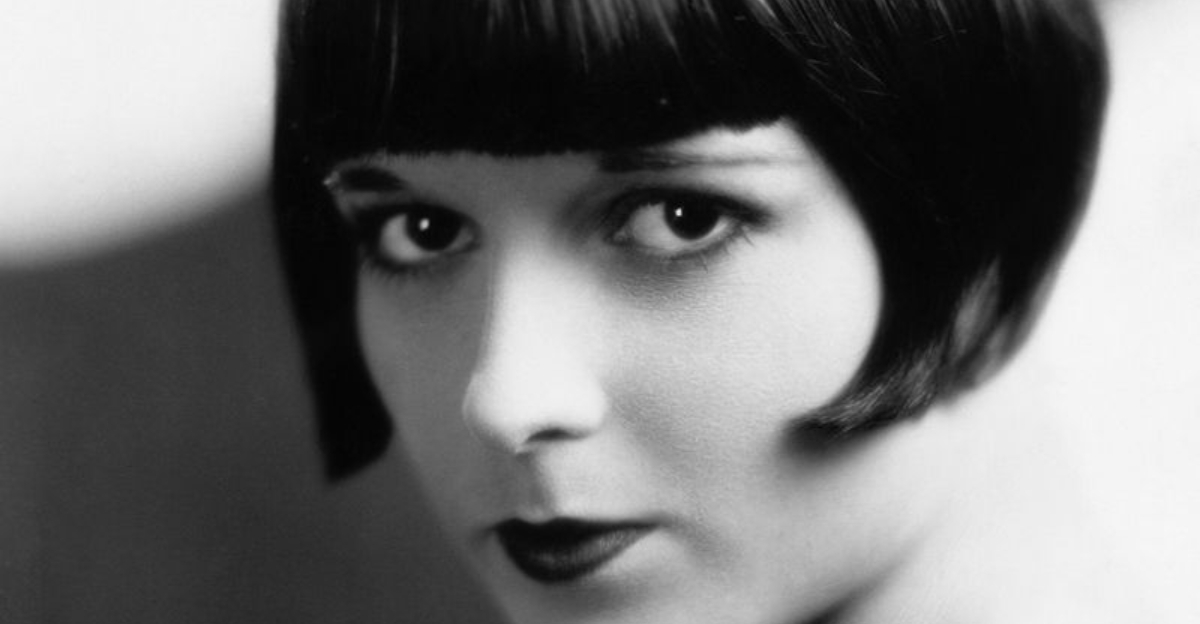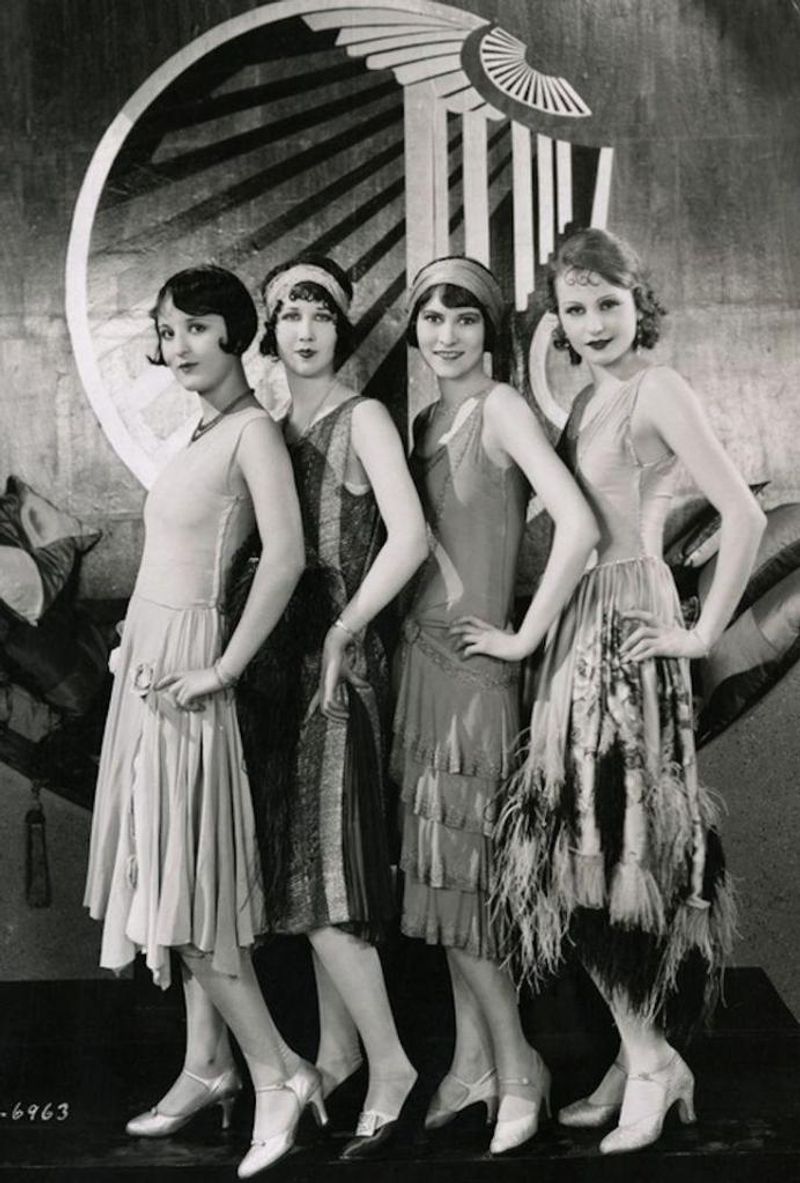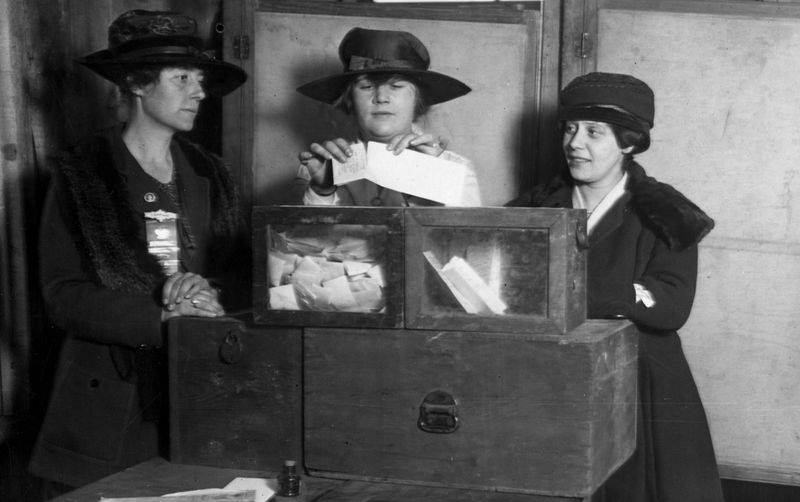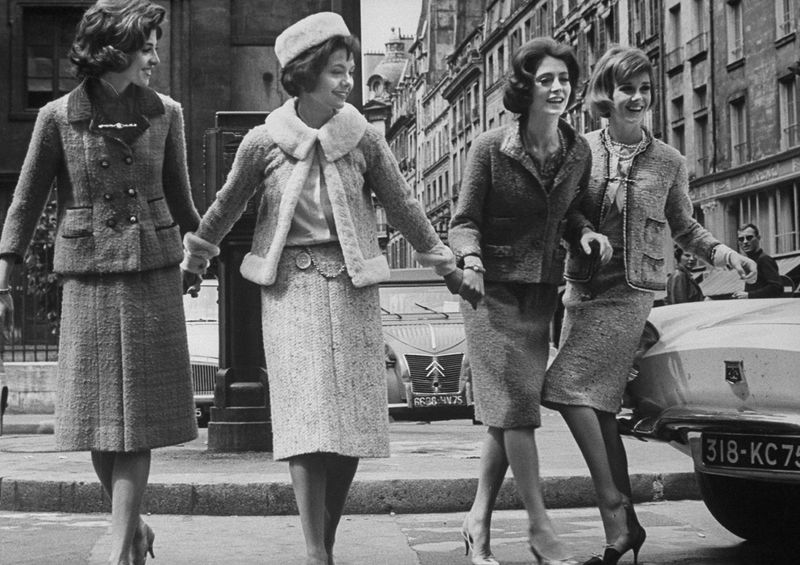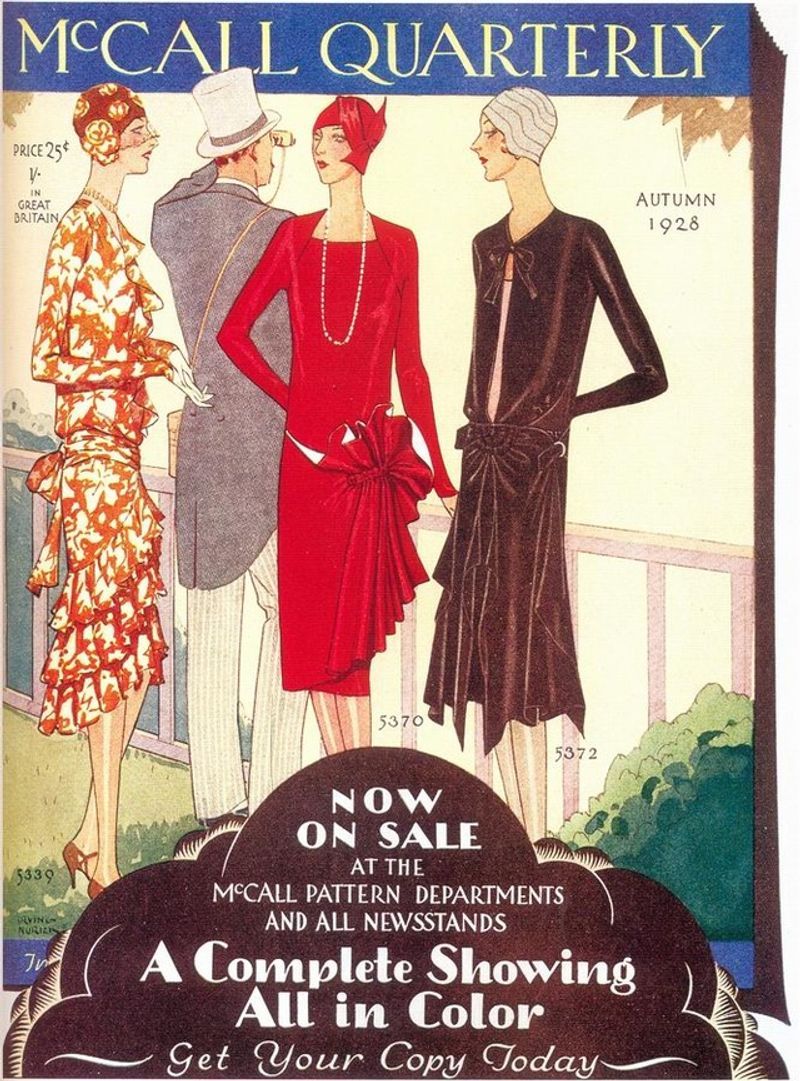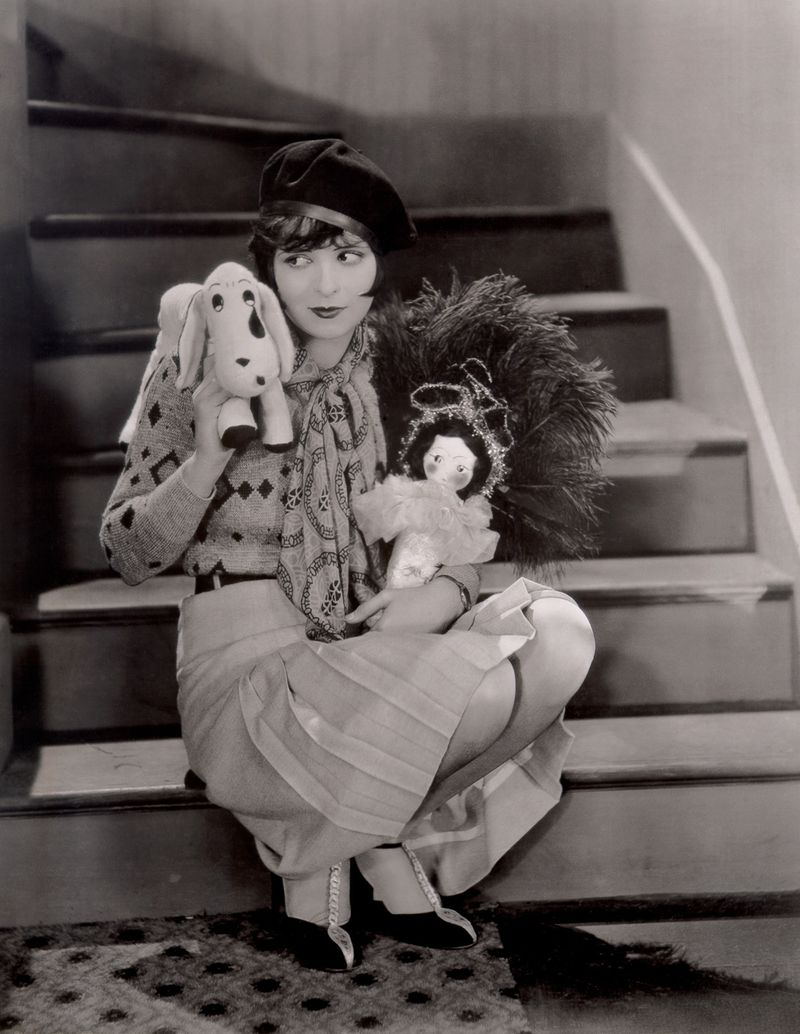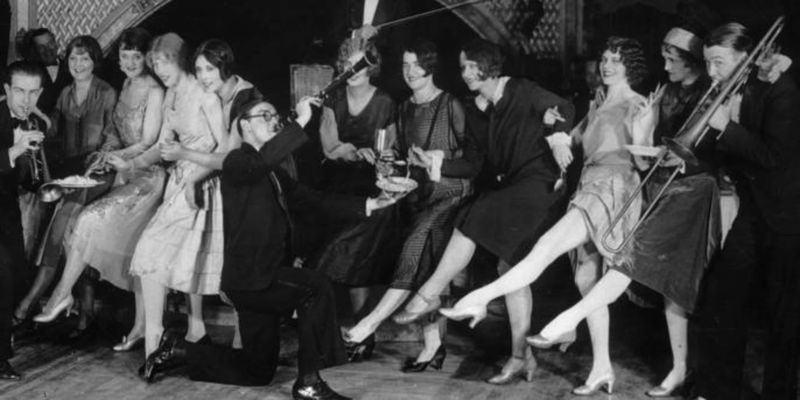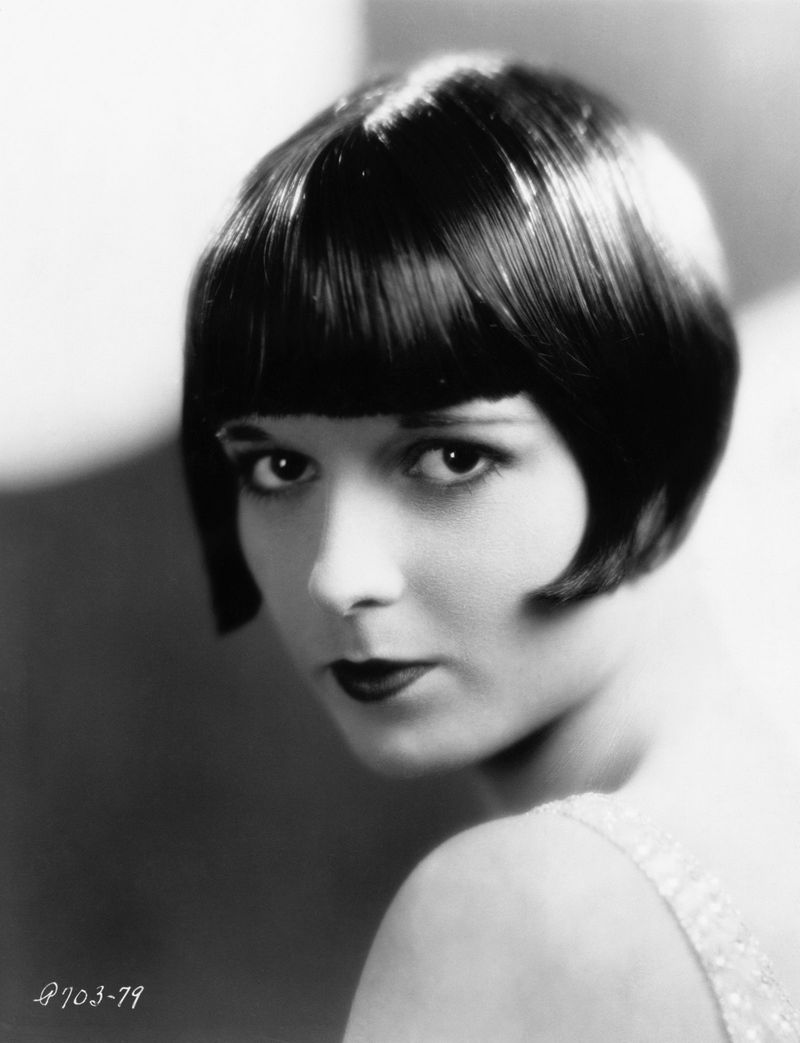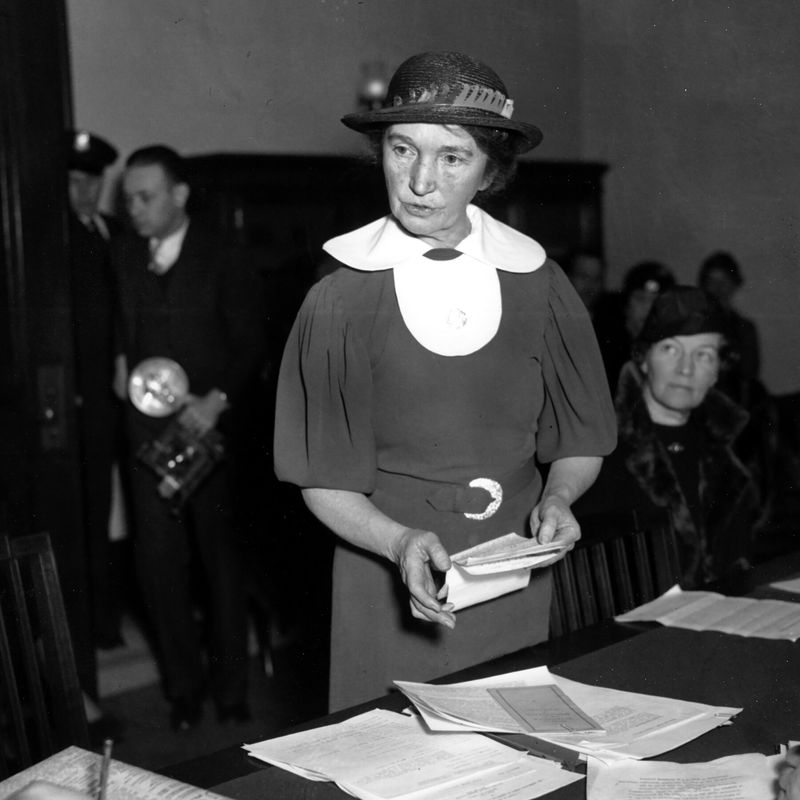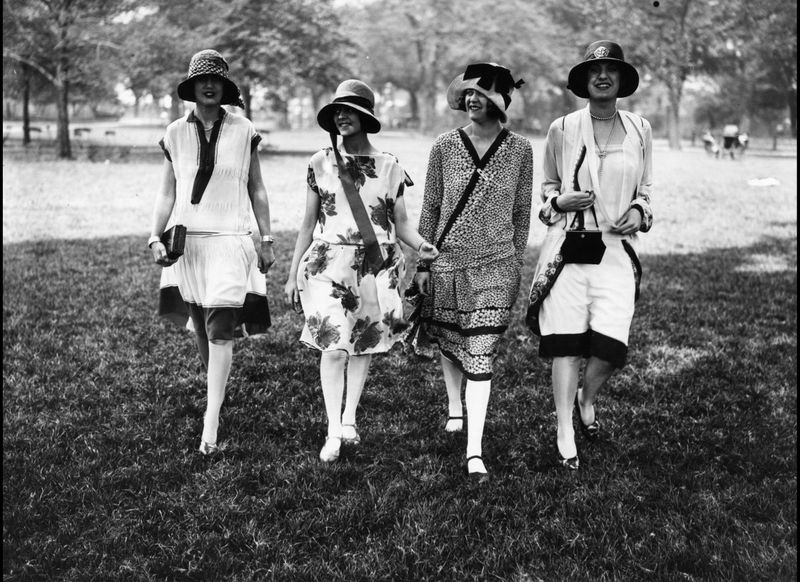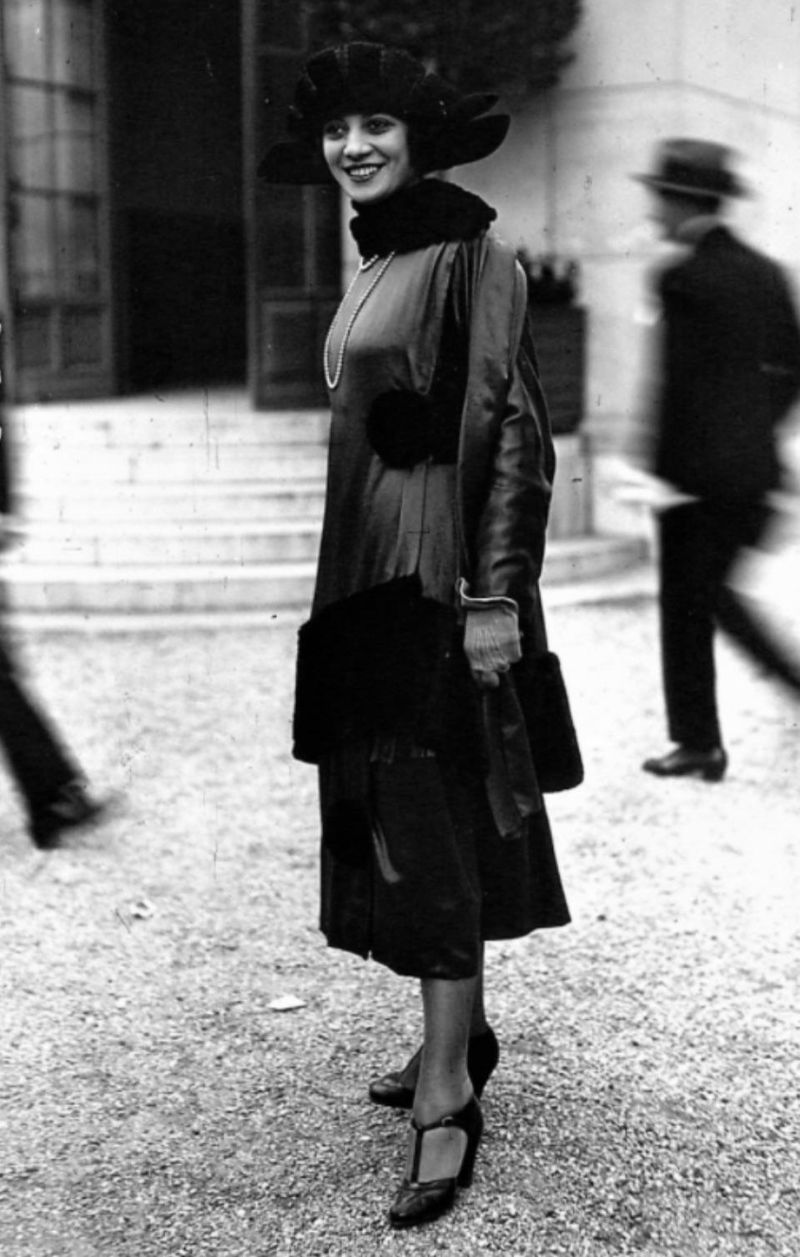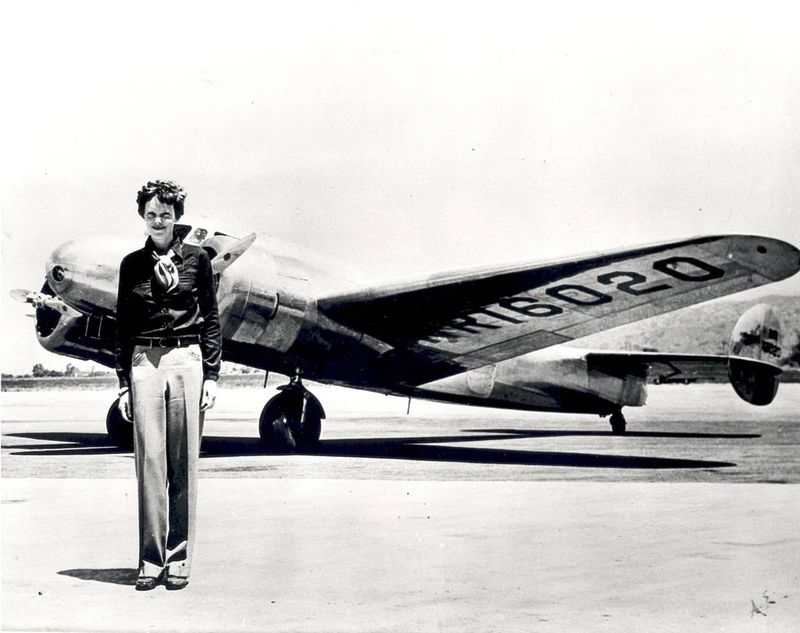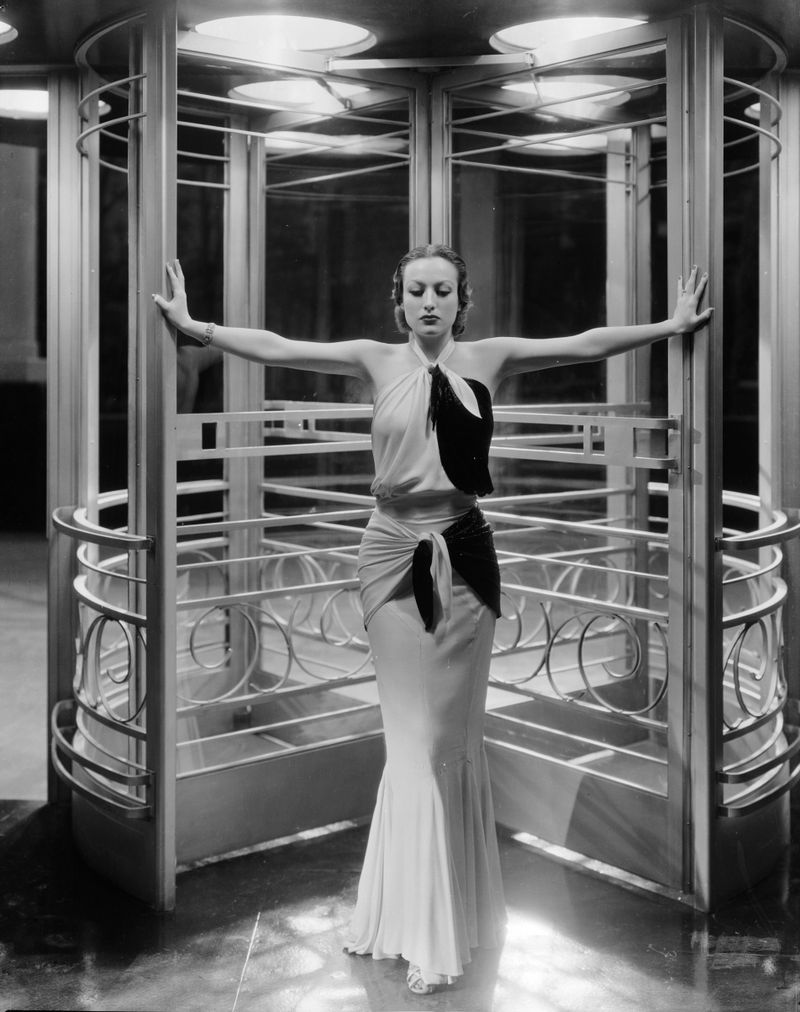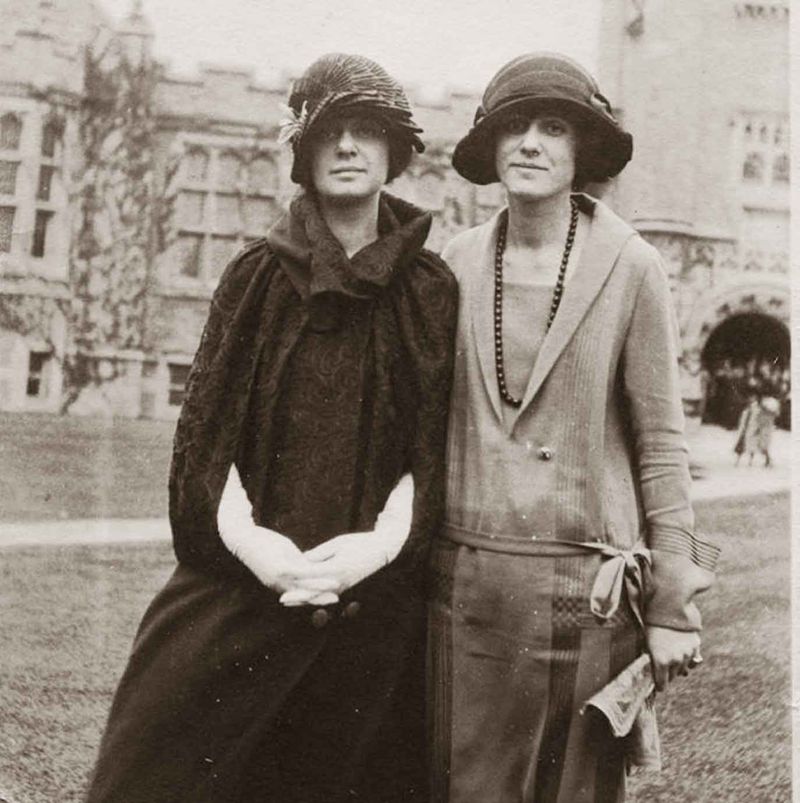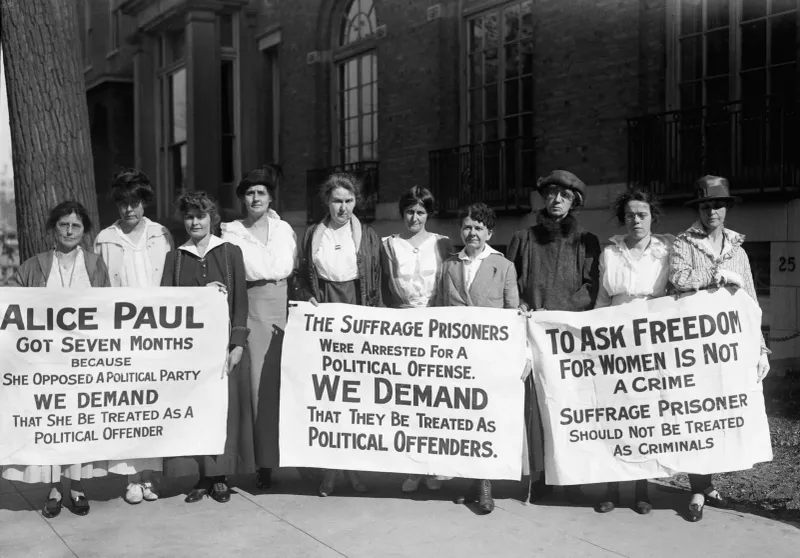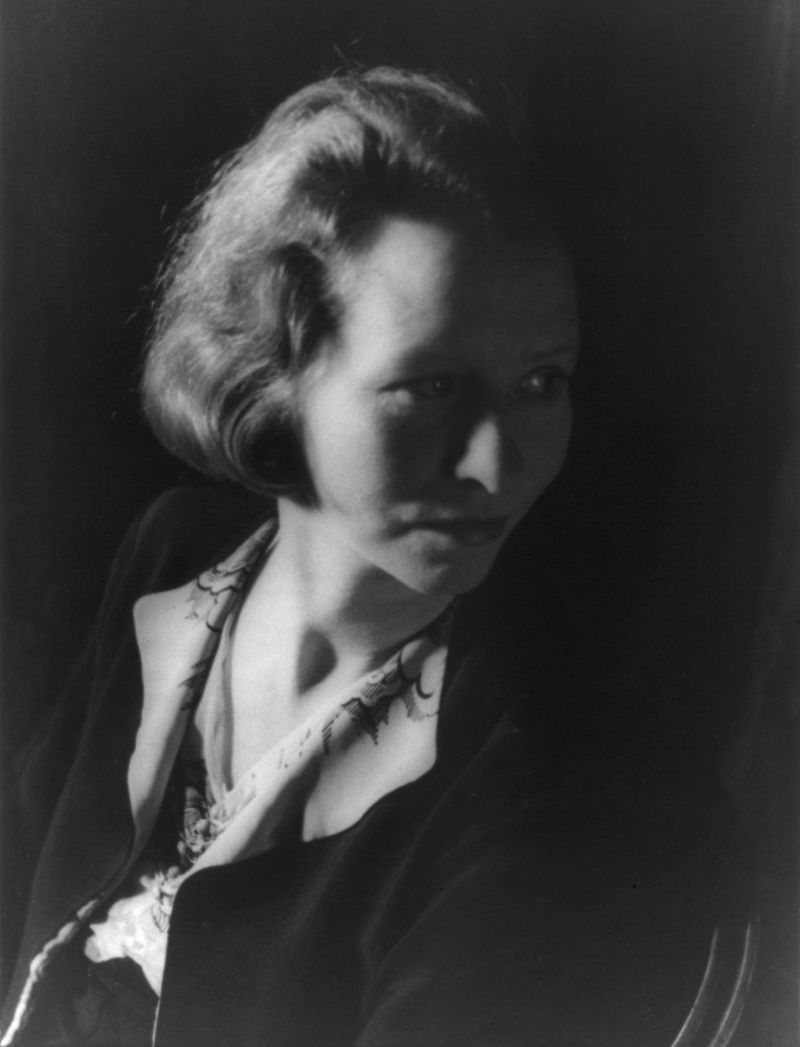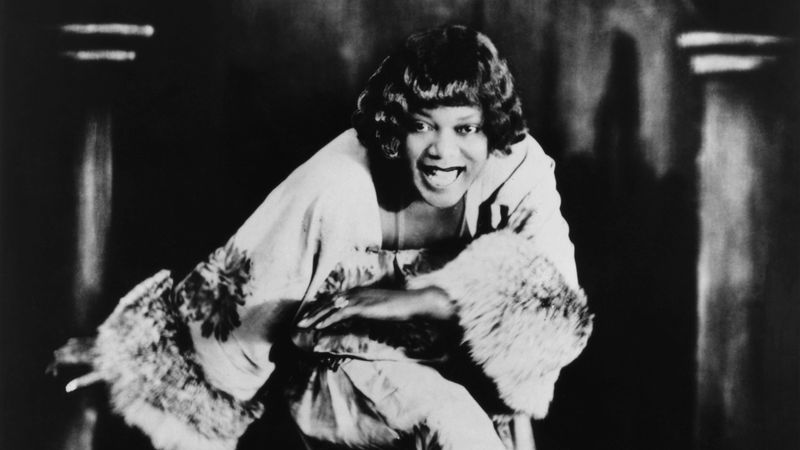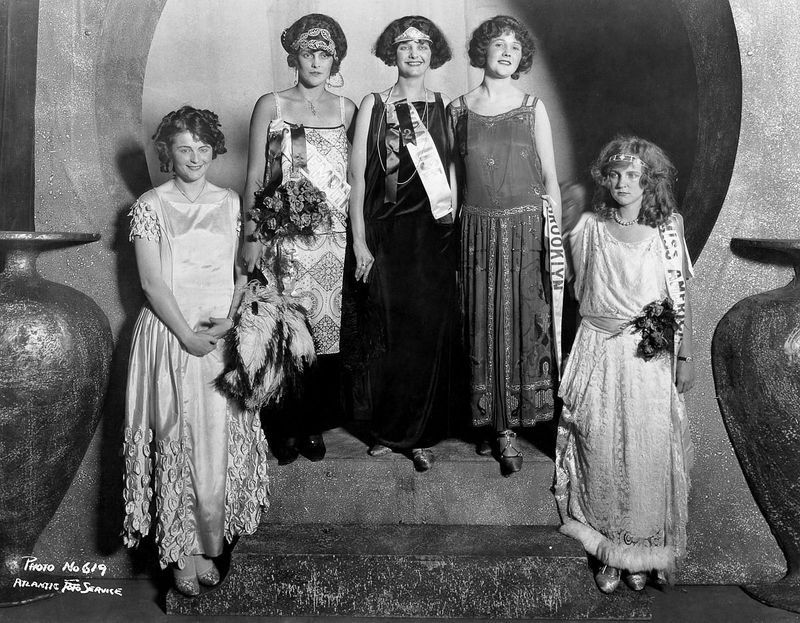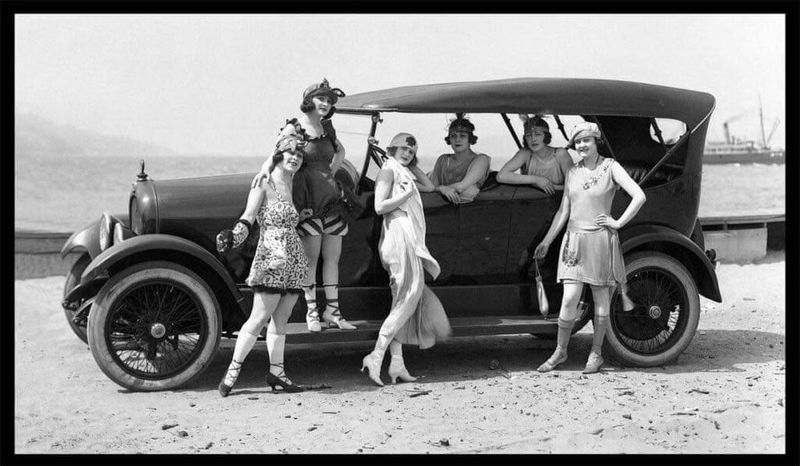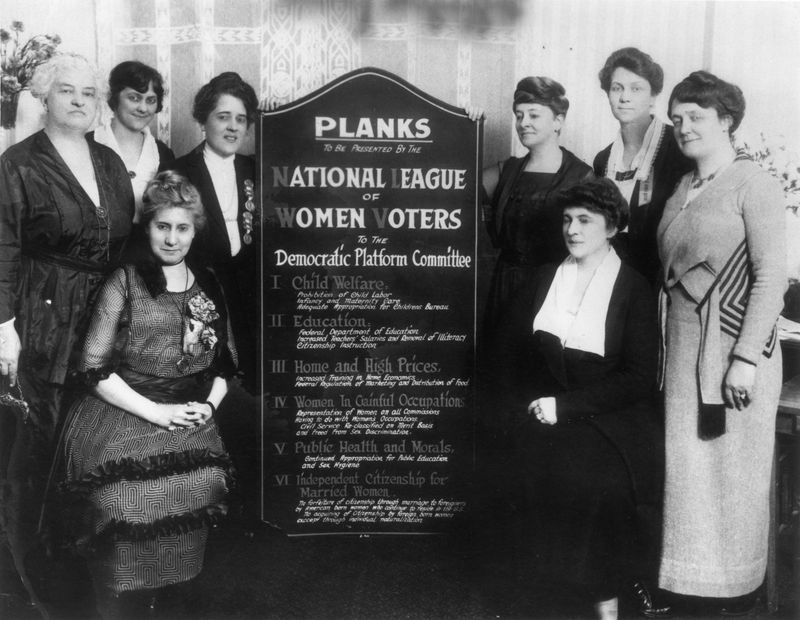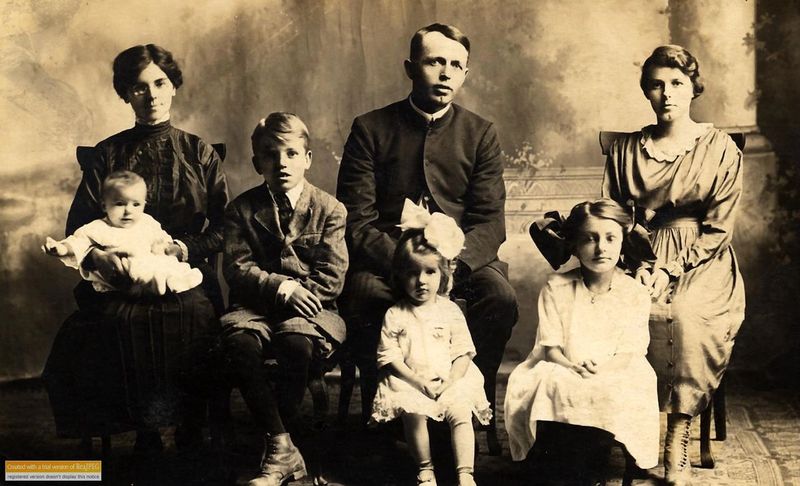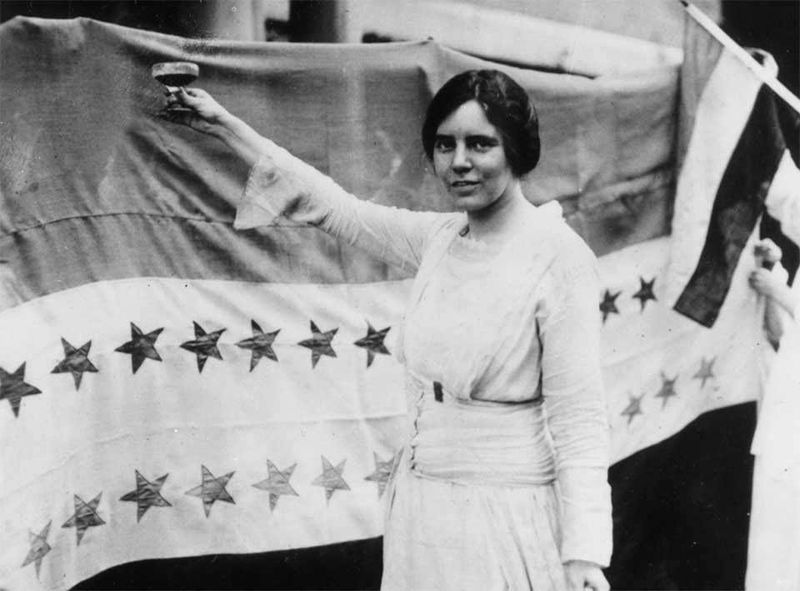The 1920s were a revolutionary decade for women, marked by seismic shifts in fashion, politics, and social roles. From the flapper phenomenon redefining femininity to groundbreaking achievements in various fields, women of the 1920s left an indelible mark on history.
This era saw women embracing new freedoms and opportunities, as they broke away from traditional norms and forged new paths.
Join us as we explore 25 fascinating facts about the fearless women who ruled the 1920s, celebrating their enduring legacy and the vibrant culture they helped shape.
1. The Flapper Phenomenon
The 1920s flapper was more than just a fashion icon; she was a symbol of rebellion and liberation. With her daring bob haircut, knee-length dresses, and penchant for jazz music and dancing, the flapper challenged traditional notions of femininity.
These young women embraced a carefree lifestyle, frequenting speakeasies and embodying a spirit of independence. The flapper’s bold attitude and modern style represented a significant break from the past, making her a cultural symbol of the Roaring Twenties.
Her influence extended beyond fashion, impacting social norms and expectations for women across society.
2. The Right to Vote
The 19th Amendment, ratified in 1920, granted American women the right to vote, marking a monumental shift in political empowerment. This victory was the result of decades of tireless advocacy by suffragettes, who faced significant opposition.
The ability to vote allowed women to influence elections and policies, fostering greater engagement in civic life. This newfound political power inspired many women to pursue careers in politics and public service, further expanding their roles in society.
The 19th Amendment was a crucial step toward gender equality, symbolizing the broader social changes taking place.
3. Coco Chanel Revolutionizes Fashion
Coco Chanel revolutionized fashion in the 1920s by introducing relaxed silhouettes and freeing women from the constraints of corsets. Her designs, characterized by simplicity and elegance, redefined modern style.
Chanel’s influence extended beyond clothing, as she popularized the little black dress and introduced costume jewelry. Her fashion house became a symbol of chic sophistication, and her innovative approach set new standards for the industry.
Chanel’s legacy continues to inspire designers today, making her one of the most influential figures in fashion history. Her daring vision transformed the way women dressed and perceived themselves.
4. The Rise of the Working Woman
The 1920s saw a significant rise in the number of women entering the workforce, seeking financial independence and new opportunities. From offices to factories, women took on diverse roles, challenging traditional gender norms.
This shift was driven by both necessity and desire for autonomy, as women sought to contribute to their households and society. The presence of women in the workforce helped change perceptions about their capabilities and potential.
As they earned their own income, women gained more control over their lives, paving the way for future generations to break barriers in professional fields.
5. The Birth of Women’s Magazines
Women’s magazines in the 1920s played a crucial role in shaping public opinion and identity. Publications like Ladies’ Home Journal offered articles on fashion, home life, and personal development, influencing millions of readers.
These magazines provided a platform for discussing social issues and trends, empowering women to explore new ideas and lifestyles. They also featured advertisements that reflected changing consumer habits and aspirations.
By offering a glimpse into modern womanhood, these magazines contributed to the evolving role of women in society. Their impact on culture and media continues to be felt today.
6. Women in Entertainment
Silent film stars like Clara Bow and Josephine Baker became icons of the 1920s, challenging stereotypes and captivating audiences worldwide. Clara Bow, known as the “It Girl,” embodied the flapper spirit with her vivacious screen presence.
Josephine Baker, an African American performer, broke racial barriers and became a symbol of the Jazz Age. Their performances not only entertained but also inspired women to pursue careers in the arts.
These trailblazers redefined entertainment, demonstrating that women could excel and innovate in creative fields. Their legacy continues to influence artists and performers today.
7. Jazz and the Dance Floor
The 1920s jazz scene was a vibrant cultural phenomenon that drew women to dance clubs, where they embraced the lively rhythms of the Charleston. Jazz music, with its improvisational style, mirrored the decade’s spirit of freedom and creativity.
Women flocked to these clubs, enjoying newfound social freedoms and opportunities for self-expression. The dance floor became a space where traditional norms were challenged, and women could revel in the joy of movement.
Jazz’s infectious energy and innovative sound provided a soundtrack for the decade, leaving an indelible mark on music and culture.
8. The Bob Haircut
The bob haircut became a radical symbol of female liberation and modernity in the 1920s. Embraced by flappers and fashion-forward women, the bob was a departure from traditional long hairstyles.
This bold cut signified independence and a break from the past, reflecting the changing roles of women in society. The bob was not just a fashion statement; it represented a broader cultural shift toward self-determination and individuality.
As women adopted this hairstyle, they signaled their embrace of contemporary values and a rejection of outdated expectations. The bob remains a timeless and iconic style.
9. Birth Control Advocacy
Margaret Sanger’s advocacy for birth control in the 1920s was a pivotal moment for women’s reproductive rights. She fought tirelessly to provide women access to contraceptives, challenging societal taboos and legal barriers.
Sanger believed that family planning was essential for women’s health and autonomy, and her efforts laid the groundwork for the modern reproductive rights movement.
Her work faced significant opposition, but her determination led to the establishment of organizations that continue to support women’s health today. Sanger’s legacy is a testament to the importance of empowering women to make informed choices about their bodies.
10. Prohibition & Speakeasies
During Prohibition, women played a significant role in the vibrant speakeasy culture of the 1920s. These hidden bars, often located in basements or behind unmarked doors, offered a space where women could defy societal norms and enjoy nightlife.
The illegal nature of speakeasies added an air of excitement and rebellion, attracting those eager to experience new freedoms. Women embraced these spaces, forming social connections and making their presence felt in the nightlife scene.
The speakeasy culture of the 1920s highlighted women’s desire for independence and their active participation in shaping modern social life.
11. The Garçonne Look
The Garçonne look emerged as a daring fashion trend in the 1920s, characterized by androgynous clothing and flat silhouettes. Women adopted this style to challenge traditional gender norms, embracing trousers, loose-fitting garments, and minimalistic designs.
The Garçonne look symbolized a rejection of conventional femininity, reflecting women’s desire for equality and self-expression. This fashion movement was influenced by the broader cultural shifts of the decade, as women sought to redefine their roles and identities.
The Garçonne look remains an enduring symbol of the 1920s, representing both style innovation and social change.
12. Women in Aviation
Pioneers like Amelia Earhart took to the skies in the 1920s, breaking into the male-dominated field of aviation. Earhart’s determination and skill as a pilot earned her widespread acclaim, inspiring countless women to pursue careers in aviation and beyond.
Her solo transatlantic flight in 1932 marked a significant milestone in aviation history, showcasing women’s capabilities and potential. Earhart’s achievements symbolized the broader push for gender equality and expanded opportunities for women in various fields.
Her legacy continues to inspire those who dare to dream and challenge the status quo, both in aviation and beyond.
13. Art Deco & Personal Style
The Art Deco movement of the 1920s influenced women’s personal style, encouraging bold self-expression through fashion and beauty. Women embraced vibrant makeup, geometric prints, and ornate accessories, reflecting the artistic and cultural dynamism of the era.
This style was more than just aesthetic; it was a way for women to assert their individuality and creativity. The use of luxurious materials and intricate designs symbolized the optimism and modernity of the decade.
Art Deco’s influence extended beyond fashion, shaping architecture, art, and design, and leaving a lasting impact on cultural history and personal style.
14. The Modern Girl Goes to College
In the 1920s, higher education became more accessible to women, empowering them intellectually and socially. Female students, often called “modern girls,” pursued degrees in various fields, challenging traditional gender roles.
College campuses became hubs of cultural exchange and personal growth, where women could explore new ideas and opportunities. Education was seen as a path to independence and self-discovery, allowing women to contribute to society in meaningful ways.
The increasing presence of women in academia reflected broader social changes and laid the foundation for future generations of educated and empowered women.
15. Women’s Rights Movements Globally
The 1920s witnessed a surge in women’s rights movements around the globe, as feminists demanded voting rights, education, and autonomy. From Europe to Asia, women organized rallies and campaigns to challenge oppressive systems and advocate for change.
These movements were diverse and multifaceted, reflecting the unique cultural and political contexts of each region. Despite facing significant obstacles, women persisted in their fight for equality, inspiring future generations of activists.
The global nature of these movements highlighted the interconnectedness of struggles for women’s rights and the shared vision of a more just and equitable world.
16. Breaking Into Literature and Journalism
Women like Dorothy Parker and Edna St. Vincent Millay made significant contributions to literature and journalism in the 1920s. As writers and critics, they shaped cultural conversations, challenging societal norms through their sharp wit and insightful observations.
Parker’s work with the Algonquin Round Table and Millay’s Pulitzer Prize-winning poetry brought women’s voices to the forefront of literary discourse. These trailblazers demonstrated that women could excel in the literary world, paving the way for future generations of female writers.
Their legacy remains influential, inspiring readers and writers with their bold and innovative work.
17. Spearheading the Harlem Renaissance
Zora Neale Hurston and Bessie Smith were central figures in the Harlem Renaissance, a cultural revival that celebrated African American art and identity in the 1920s. Hurston’s literary contributions and Smith’s powerful blues performances helped define the era’s artistic landscape.
Their work challenged racial stereotypes and highlighted the rich cultural heritage of the African American community. The Harlem Renaissance fostered a sense of pride and solidarity among Black artists and intellectuals, influencing future movements for civil rights and social justice.
Hurston and Smith’s legacies continue to inspire those committed to cultural expression and change.
18. Expanding Roles in Politics
Nellie Tayloe Ross made history in 1925 as the first female governor in the United States, breaking new ground for women in politics. Her election in Wyoming marked a significant milestone, inspiring women across the country to pursue public office and engage in political discourse.
Ross’s tenure focused on issues like education and social welfare, demonstrating women’s ability to lead and govern effectively. Her success paved the way for future generations of female politicians, highlighting the importance of representation and diversity in government.
Ross’s legacy serves as a reminder of the impact women can have in shaping policy and society.
19. The Birth of the Miss America Pageant
The Miss America Pageant, launched in the 1920s, reflected new ideals about femininity and public presence. Initially a tourist attraction in Atlantic City, the pageant quickly gained popularity, showcasing young women from across the country.
It became a platform for celebrating beauty, talent, and poise, while also sparking debates about gender roles and expectations. The pageant’s evolution mirrored broader social changes, as it adapted to shifting cultural values.
Despite criticisms, the Miss America Pageant remains a significant cultural institution, shaping perceptions of femininity and offering opportunities for women to engage with their communities and pursue personal growth.
20. Owning Automobiles
The automobile revolution of the 1920s gave women unprecedented freedom and independence. As more women learned to drive, they gained mobility and the ability to explore beyond their immediate surroundings.
Owning a car symbolized autonomy and modernity, allowing women to participate in the social and economic life of the time. The open road represented new possibilities and adventures, breaking down barriers and expanding horizons.
This newfound independence contributed to changing perceptions of women, as they embraced the opportunities and experiences that driving offered. The automobile became a powerful tool for personal empowerment and social change.
21. Founding Women’s Clubs and Leagues
The 1920s saw the rise of women’s clubs and leagues, such as the League of Women Voters, which advanced civic engagement and reform. These organizations provided a platform for women to advocate for social, political, and economic changes, fostering a sense of community and shared purpose.
Members organized events, lobbied for legislation, and supported educational initiatives, contributing to the broader women’s rights movement. These clubs empowered women to take an active role in shaping their communities and influencing policy.
Their efforts laid the foundation for future advocacy and continue to inspire those committed to social justice and equality.
22. Redefining Motherhood and Marriage
The 1920s brought new perspectives on motherhood and marriage, as women began to challenge traditional roles and expectations. Influenced by changing social norms and increased access to education, women explored alternative approaches to family life.
This era saw the emergence of ideas about companionate marriage, where partners sought mutual respect and equality. Women also advocated for better maternal health and child-rearing practices, reflecting their desire for autonomy and agency within the family.
These shifts represented a broader re-evaluation of gender roles and relationships, paving the way for future generations to embrace diverse family structures and dynamics.
23. Embracing Modern Technology
The technological advancements of the 1920s transformed domestic life and social interaction for women. Radios, telephones, and electric appliances became household staples, providing convenience and connectivity.
Women embraced these innovations, using them to manage their homes more efficiently and stay informed about world events. Technology also played a role in women’s social lives, as radios brought music and entertainment into the home, and telephones facilitated communication.
These changes reflected broader societal shifts toward modernization and progress, highlighting women’s adaptability and willingness to embrace new tools and technologies. The impact of these advancements continues to resonate today.
24. Pushing for Equal Rights Amendments
Activists like Alice Paul championed the Equal Rights Amendment (ERA) in the 1920s, seeking to secure legal gender equality. Paul’s dedication to women’s rights led to the introduction of the ERA in Congress, highlighting the ongoing struggle for gender parity.
The amendment aimed to eliminate legal distinctions based on sex, promoting equality in employment, property rights, and other areas. Despite facing resistance, the ERA movement galvanized women across the nation, fostering solidarity and raising awareness about gender issues.
Paul’s legacy continues to inspire those advocating for equal rights, underscoring the importance of perseverance and activism in the pursuit of justice.
25. Becoming Cultural Icons
Women became cultural icons in the 1920s, starring in advertisements, films, and art as symbols of modern life and fearless femininity. These representations reflected the changing perceptions of women, showcasing their confidence, style, and influence.
Advertisements featured women as savvy consumers and trendsetters, while films highlighted their talents and charisma. This era saw the rise of female celebrities who captivated audiences and shaped popular culture.
The depiction of women as icons of modernity and empowerment resonated with contemporary audiences, inspiring future generations to challenge stereotypes and embrace their individuality. These cultural icons continue to be celebrated for their impact and legacy.
